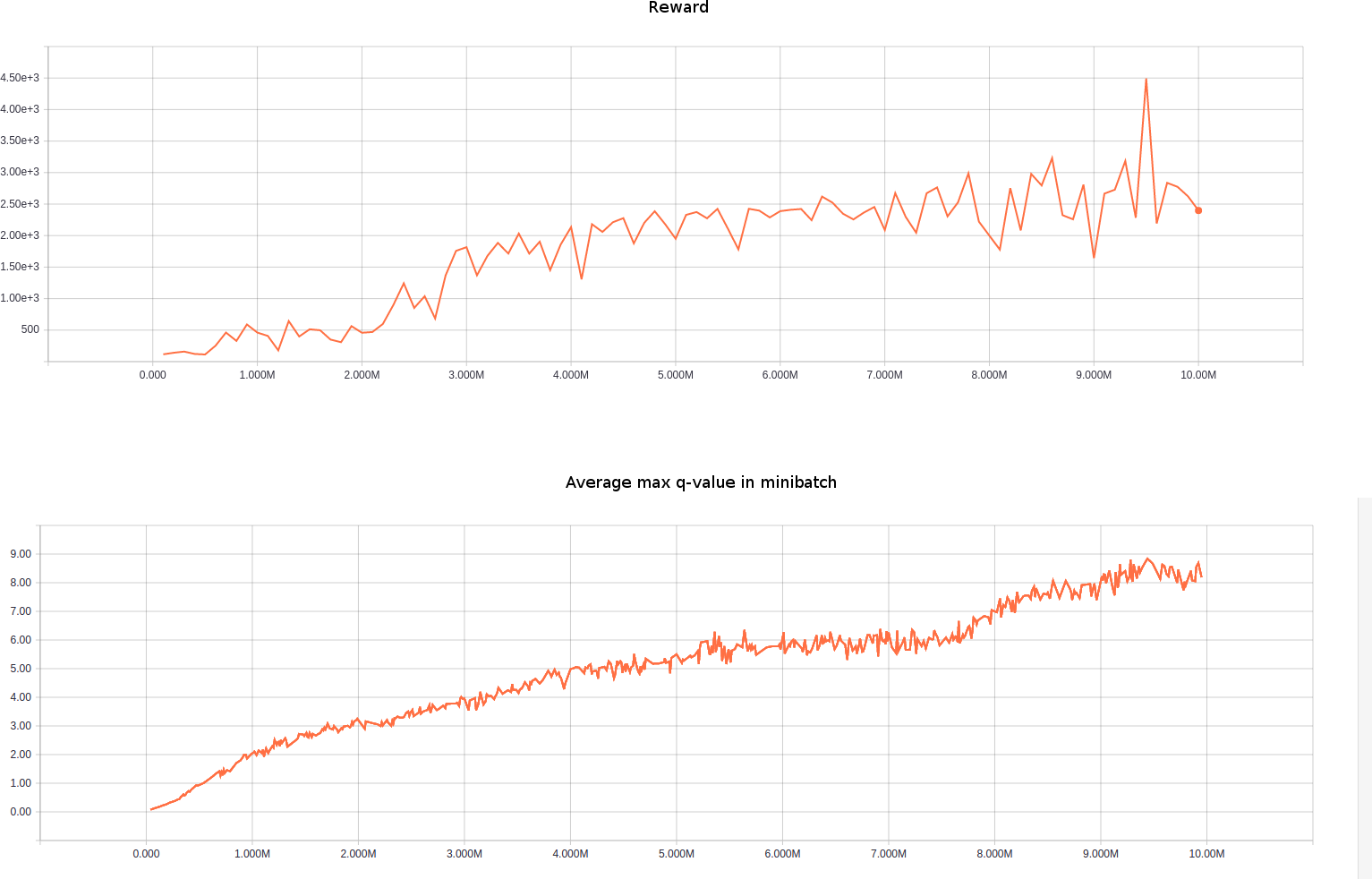Tensorflow + OpenAI Gym implementation of two popular Deep Reinforcement Learning models:
- Deep Q-Network (DQN), as described in ``Human-level control through deep reinforcement learning'', [Mnih et al., 2015] (both Nature and NIPS networks available).
- Double Deep Q-Network (DDQN), as described in ``Deep Reinforcement Learning with Double Q-Learning'', [van HAsselt et al., 2015] (this can be selected by setting `DoubleDQN=True')
- Dueling Network Architecture, as described in ``Dueling Network Architectures for Deep Reinforcement Learning'', [Wang et al., 2016]. The network can be selected by changing
qnet' andtarget_qnet' in modules/dqn.py - Deep Deterministic Policy Gradient (DDPG), as described in ``Continuous control with deep reinforcement learning'', [Lillicrap et. al, 2015].
Usage:
-
Train: $ python gym_dqn_atari.py -- trains the chosen game (customizable by modifying the code) for 10 million frames.
-
Test: $ python gym_dqn_atari.py [path to trained model file] True
-
Pretrained test: $ python gym_dqn_atari.py pretrained/Seaquest-10M.ckpt True
Apart from the implementation per se, you might be interested in the implementation of the Experience Replay Memory, which is pretty fast, and the wrapper to pre-process OpenAI Gym frames for Atari games.
I have tried to keep the implementation as simple and minimal as possible, but still retaining all the important functionalities. For anything else, feel free to contact me!
